

From: Berhane Habtemariam (Berhane.Habtemariam@gmx.de)
Date: Thu May 06 2010 - 13:13:03 EDT
ERITREA: a life time adventure tour!
Efrem Habtetsion, May 6, 2010
Nakfa, 21/04/10
PART TWO
Nakfa is a historic symbol of courage, a base of the longest armed struggle
in Africa and a symbol of perseverance and dedication of the Eritrean
freedom fighters. Its trenches, believed to be the longest in the history of
armed struggles, represent the resilience and creativity of those fighters
who stayed there for ten solid years of resistance.
http://www.shaebia.org/artman/uploads/dsc00482_copy.jpg
Most of the trenches were built in 1979, following the strategic withdrawal
of 1978. The huge wood pillars and stones were brought from far places on
the shoulders of the fighters; the canals were dug during the night using
limited equipment. These trenches faced and overcame huge enemy
bombardments, air raids and attacks for six consecutive Dergue offensives,
from the third to the eighth.
http://www.shaebia.org/artman/uploads/dsc00504_copy.jpg
"The hills of Nakfa include long trenches and dugouts that stretch for
kilometres [yet to be measured] on the top of hills, underground houses,
workshops and factories that show the talent and endeavours of the
fighters," stated a brochure prepared by the Northern Red Sea Region's
regional museum.
Long and decisive battles were fought at the hills surrounding Nakfa, which
makes it a historic memorandum of dedication of the Eritrean people for
freedom and the steadfastness of the revolutionary army in accomplishing the
mission. All the names of the trenches symbolize the tough time of fighting
in each hill and mountain in one hand and the resilience of the fighters on
the other. Some of them include: hill of peace (taba selam), globe, taba
wfuyat (hill of the dedicated), lajin (refugee) farnielo (stove), Nakura,
volleyball, Spartacus. according to reports, there were about 120,000 enemy
soldiers stationed in the Nakfa fronts against only four brigades and a
battalion of the Eritrean People's Liberation Front (EPLF).
http://www.shaebia.org/artman/uploads/dsc00577_copy.jpg
Regarding the names of some of he trenches if we refer to Farnielo (stove),
for example, since the area was always on fire due to the continuous and
heavy attacks, the fighters were forced to compare it with a stove. This
might also support Dan Connell's book on the Eritrean war for liberation
entitled: "Eritrea: even the stones are burning." Volleyball was also named
after continues grenade exchange between the two sides, which were very
close to each other like two teams playing volleyball game.
We visited a few of the many trenches of Nakfa during our visit and we were
briefed about them by different commanders who where there during the war.
Most of what we heard being mentioned seemed a miracle. Every step you go on
those hills bears its own history of resilience. "This is called 'eto belo'
(tell him get in)," said the fighter who was briefing us, pointing to an
underground house whose roof has now fallen down. It received that name
because no one could stand for a second without been seen by the enemy.
http://www.shaebia.org/artman/uploads/dsc00658_copy.jpg
After visiting only the trenches near Nakfa, because most of them are far
away, we toured the city. Most of those who knew Nakfa before independence
were confused about the places they had visited earlier. Nakfa is now a
different place comparing it to the war times. It was the most bombarded and
destroyed place in the country. Except for the historic mosque that stood
still against all the raids to demonstrate perseverance, Nakfa was in ashes.
A number of underground offices are located everywhere in the city; most of
them keeping their originality but some with unwanted improvements. Offices
of the different brigades of the EPLF who were stationed there during the
war; office of the higher commanding staff of the Nakfa Front including
higher leaders such as Ali Said Abdela, Ibrahim Afa and others are houses
that still look alive and when they are preserved well they would be symbols
of dedication.
http://www.shaebia.org/artman/uploads/dsc00659_copy.jpg
Nakfa has grown fast since independence. Despite the lack of access to
adequate transportation services, its biggest problem at the moment, it
provides its residents with the other basic services-education and health.
Although the construction of a new road that connects Nakfa to Afabet was
started, it didn't continue. The way is still through the historic Hiday
Valley which is very tough for vehicles. The completion of the road would
definitely play a central role in the development of the city and in
encouraging visitors. One day in the future, Nakfa would be the main
destination for domestic as well as international tourism in the country,
benefiting from its remarkable history, landscape, long and amazing
trenches, its climate and so on.
The National Museum of Eritrea is working hard to register five historical
places in the world heritage list at the present, Nakfa being one of them.
"Nakfa has a unique history and the longest war trenches. So, it fulfils all
the UNESCO requirements to be listed," Dr. Yossief Lbsekal, Head of the
National Museum, said in a conversation we had at the trenches.
http://www.shaebia.org/artman/uploads/dsc00589.jpg
Nakfa has become a home to different educational institutions. There are two
vocational schools; elementary, junior and secondary schools run by the
government, and the PFDJ's School of Social Sciences. Although the residents
of Nakfa are farmers and nomads, many also participate in business
activities. Coffee shops with a number of clients on their sidewalks; loaded
Lorries and other vehicles, camels on the streets, the 'gira fiori' and the
sound of different melodies that echo from various directions add beauty to
the afternoon life of the city.
The amazing landscape and trenches that are stretched on the top of the
hills of Nakfa are more attractive when you see them from above. We took
helicopters to observe the natural beauty, elevation and diverse forest of
Rora Bakla, the place that used to take hours for the fighters from Nakfa on
foot, now we were able to visit it in just a few minutes.thanks to those who
made independence a reality. The elevation of the place is about 2,500
meters enabling it receives enough rainfall to look greener.
The helicopters are taking us to Dahlak Islands tomorrow.
C Copyright 2001-2009 Shaebia.org
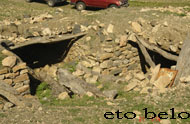
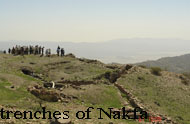
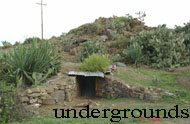
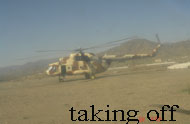
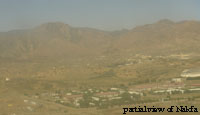
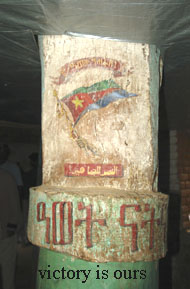
----[This List to be used for Eritrea Related News Only]----
